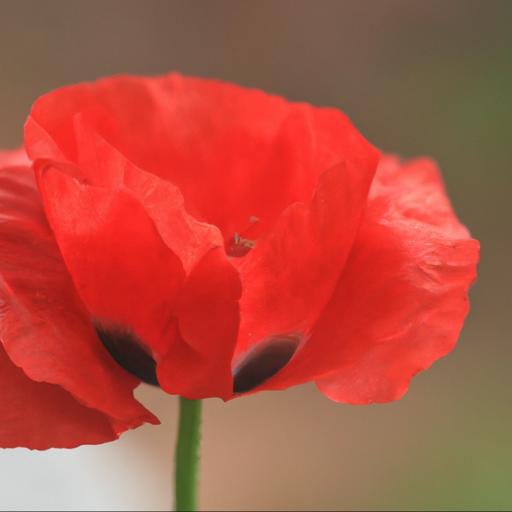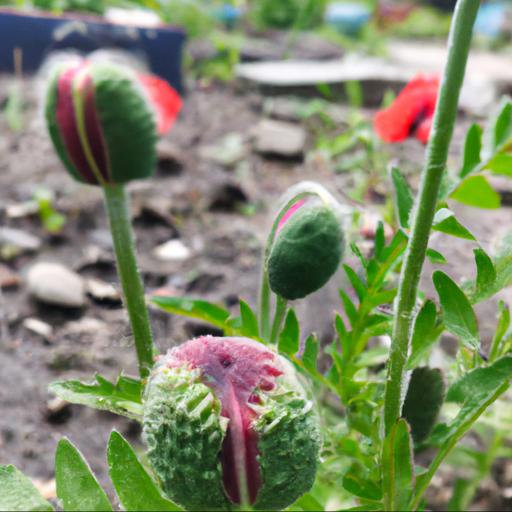Papaver rhoeas, commonly known as the common poppy, is an iconic flower known for its vibrant red hue and delicate petals. It is a species of flowering plant in the poppy family, and is native to Europe and parts of Asia. This flower has a long history of being used as a symbol of remembrance and hope, particularly in relation to war and conflict.
In this blog, we will explore the history and significance of the common poppy, as well as its uses in horticulture and medicine. We will also look at how this beautiful flower is helping to raise awareness of the ongoing struggles of war-torn countries around the world.
The history and significance of papaver rhoeas

Papaver rhoeas, also known as the common poppy, is an iconic flower in many countries, but has particular significance in the UK. Throughout history, this delicate yet beautiful flower has come to represent the sacrifice that has been made by the military and civilians during some of the most harrowing conditions of the World Wars.
It is the flower that the fallen have come to be remembered by and it blooms in many public and private spaces across the UK today. The common poppy was first seen during the Napoleonic Wars of the 19th Century. It was found either side of the trenches in which the war was waged, growing from the churned up soil, where it spread quickly.
It is this very factor which then came to be so closely associated with war and remembrance. After World War I in 1918, when the conflict had ended, the poppy stood out in places stripped of the vegetation that had previously covered it and had come to epitomise the resurrection of hope for the survivors and the loved ones of those lost. In 1921, the first remembrance poppy was sold in the UK, having been made from papier-mache.
In recent years, during the months leading up to Remembrance Day (the 11th of November), millions of metal and/or paper poppies are sold in order to raise funds towards the upkeep of of various war memorials across Britain. Unfortunately, due to the Covid pandemic, the sale of poppies has been significantly reduced in 2020.
Nevertheless, the meaning of this flower remains and poppies still bloom in celebration of peace in many places. The flower has become a symbol of hope and remembrance that transcends generations and is a reminder of the effects of war and the cost of freedom.
Whenever you see a poppy, spare a thought for all the individuals who have made the greatest of sacrifices so that we may live peacefully in our home towns and elsewhere.
The unique characteristics of papaver rhoeas

Papaver rhoeas, commonly known as the common poppy, is an extraordinary flower renowned for its unique characteristics. The bright, four-petaled flower is easily recognizable throughout the UK and Europe, and is the official flower of Remembrance Day.
It is an herbaceous perennial, meaning it will bloom for several years with proper care. The common poppy is a hardy, low-growing plant and requires little maintenance. It can grow to be up to 80cm in height, depending on soil condition and available light.
The intense deep red colour of the petals stands out in gardens and wild meadows, as well as against green foliage. But it’s the bright yellow centres, with a spidery network of black veins, that really draw the eye and make this flower so recognisable. Aside from its stunning aesthetics, the common poppy is also known for its hardiness.
It is able to survive and thrive in many different climates and can quickly self-seed itself by scattering tiny seeds through the air. This, combined with its beauty and easy maintenance requirements, make it a great addition to any flower bed or garden.
The common poppy is also a valuable source of food for many pollinating bees, wasps, hoverflies, and butterflies, further adding to its value in any green space.
Growing and caring for papaver rhoeas

Papaver rhoeas, commonly known as the common poppy, is a delicate, yet resilient flower that can thrive in a variety of climates. An easy to grow annual, Papaver rhoeas can reach between
5 and 3 feet tall. Most known for its bright red hue, the common poppy can also be found in other attractive shades of pink, yellow, and white. The key to successfully growing and caring for Papaver rhoeas is providing the right environment in which it can thrive.
When planting, choose a sunny spot and make sure the soil is well-drained and rich in organic matter, as overly wet and soggy soil can quickly lead to fungal issues. During the growing season, ensure the soil remains moist but not soggy, taking care to water deeply and sparingly. Papaver rhoeas is generally considered drought tolerant but should be provided with adequate irrigation during hot, dry periods.
Papaver rhoeas is generally considered low-maintenance, but regular deadheading will help promote more blooms. Utilize gentle preventative measures, such as netting and insecticidal soaps, to protect against insect pests, such as slugs and snails.
Alternatively, introduce natural predators, such as chickens and guinea fowl, that can help keep rabbits and insect populations in check. For gardeners in colder climates, Papaver rhoeas winter care can be a bit tricky. Power-wash or spot-treat with a fungicide during mild winters or when it shows signs of infection.
However, if mulching during the winter months, make sure to keep it 2-3 inches away from the crown. When done correctly, the Papaver rhoeas will reawaken during the spring and heat of summer, rewarding you with its vibrant blooms.
Creative uses for papaver rhoeas
A garden wouldn’t be complete without bright and colourful blooms, and what better way to add a splash of colour than with the incredible Papaver rhoeas, also known as the Common Garden Poppy? This vibrant wildflower is not only a popular ornamental plant, but is also a great choice for making creative floral projects and displays.
Papaver rhoeas is a fast-growing annual that can reach up to a metre in height, with eye-catching flowers that come in white, pink, magenta, salmon, and red. The petals are often fringed, with a black centre and stalked leaves that typically reach up to 10cm in height. This beauty is quite low-maintenance, meaning it can thrive in most soils and weather conditions and requires very little watering.
These dazzling blooms are perfect for use in craft projects, centrepieces, or arrangements. Whether you’re in search of cut flowers for floral bouquets, a longer-lasting dried flower bouquet, or even a DIY wreath to hang on your front door, Papaver rhoeas is the perfect choice! These easy-care plants can even be used as a lively backdrop for paintings and photographs.
Alternatively, if you’re looking for a more permanent solution, try planting Papaver rhoeas directly into your garden for vibrant fun all year round. If you’re brave enough, you could even try growing Papaver rhoeas indoors.
With the right care, you could easily grow these elegant blooms within the comfort of your own home. This exquisite flower can even be used as a chief ingredient in homemade soap, if you’re feeling creative. Papaver rhoeas is a great addition to any garden, especially if you’re looking to add that extra bit of charm and character.
Not only are these vibrant blooms aesthetically pleasing and often abundant in the gardens of UK citizens, but their various uses make them a great option for all of your craft, decor, or gardening needs.
Our video recommendation
Bottom Line
Papaver rhoeas, commonly known as the common poppy, is an annual flowering plant native to Europe and Asia. It is a common sight in fields and meadows, and is often used as a symbol of remembrance for soldiers who have died in war. The flowers are bright red, with four petals and a black centre.
The plant is also a source of natural dyes, and has been used in traditional medicines for centuries. Papaver rhoeas is a beautiful, hardy plant that is a reminder of the sacrifice of those who have gone before us.
FAQ
What is the scientific name of the Papaver rhoeas flower?
The scientific name of the Papaver rhoeas flower is Papaver rhoeas.
What is the common name of the Papaver rhoeas flower?
The common name of the Papaver rhoeas flower is the Corn Poppy.
What are the characteristics of the Papaver rhoeas flower?
The Papaver rhoeas flower is a bright red, poppy-like flower with four petals. It has a black or dark purple center and a yellow stigma. The flower blooms in the summer and is a symbol of remembrance in many countries. It is also known for its medicinal properties.
What is the natural habitat of the Papaver rhoeas flower?
The natural habitat of the Papaver rhoeas flower is in grassy meadows, pastures, and roadsides.
What is the symbolic meaning of the Papaver rhoeas flower?
The Papaver rhoeas flower is a symbol of remembrance and hope. It is often used to commemorate those who have died in war, as well as to express hope for a better future.
What are the medicinal uses of the Papaver rhoeas flower?
The Papaver rhoeas flower has been used in traditional medicine for its sedative, antispasmodic, and analgesic properties. It has been used to treat a variety of ailments, including insomnia, anxiety, depression, and headaches. It is also believed to have anti-inflammatory, antifungal, and antimicrobial properties.

